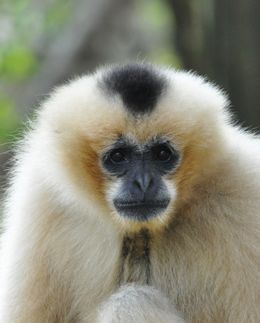Largest rice genetics study finds vast differences between Asian rice subpopulations
The largest publicly available genomewide association mapping study in rice to date has found that although the five subpopulations of Asian rice - indica, aus, temperate japonica, aromatic and tropical japonica - all belong to one species (Oryza sativa), their genetic structures are so different that, genetically speaking, they are almost like different species.
An international team led by Cornell researchers and published in Nature Communications conducted the study based on genotyping (identifying genetic differences) more than 44,000 single nucleotide polymorphisms (SNPs) across 413 diverse O. sativa varieties from 82 countries. SNPs refer to genetic variation on the DNA level - points in the genome where a base pair change makes one individual within a species different from another.
The researchers also phenotyped (measured the observable characteristics) for 34 traits related to size, shape, plant development and agronomic performance. Finally, the researchers analyzed the data to determine which particular traits are associated with which SNPs.
"Unlike maize, tomato and many other crops, Asian rice is highly differentiated into five distinct subpopulations or ecotypes," said Susan McCouch, professor of plant breeding and the paper's senior author. The genetic differences among these five rice subpopulations are greater than the differences between many cultivated crops and their wild ancestors, she added.
That's because ancient rice subpopulations have evolved separately for thousands of years as farmers migrated and selectively bred them in a wide range of different ecological and climatic conditions that collectively altered their genetic makeups, McCouch said.
Also, rice mostly self-pollinates or inbreeds, with plants recycling their own genes, while such crops as maize and potato freely cross-pollinate, so they continuously exchange genes within their species and with their wild ancestors. And other inbreeding crops such as tomatoes, for example, were domesticated only once, narrowing the gene pool, while rice was domesticated multiple times in different places.
"You have to take all this into account when you evaluate the genetics of rice," McCouch said.
For example, when the researchers analyzed a trait such as the size of rice panicles (the branched structure holding clusters of flowers or grains), they found variation is highly partitioned by subpopulation, such that the genes that determine panicle length in each subpopulation are entirely different, providing an example of convergent evolution, where very different genetic architecture underlies the same phenotype.
Also, the group demonstrated that the same trait may be governed by different genes in different environments, as in the case of flowering time evaluated in Arkansas, Bangladesh and the United Kingdom.
By understanding which different SNPs confer specific traits, breeders can start to understand and predict how crossing between subpopulations can give rise to offspring that outperform their parents in such desired traits as yield, grain size or drought tolerance.
All the genotypic and phenotypic data and the seeds for the 413 lines of rice are publicly available, allowing geneticists and breeders to build on this work, selecting subsets of SNPs for use in local rice populations, using phenotypic data to identify lines with desired traits to cross with local varieties, and leveraging genotypic data to better understand the genetics of complex trait variation in natural populations of rice and other plant species.
"On the science side, we are taking complex traits and breaking them down into their genetic components," and then using SNP variation to begin to predict phenotypic variation, McCouch said.
Most read news
Organizations
Other news from the department science

Get the life science industry in your inbox
By submitting this form you agree that LUMITOS AG will send you the newsletter(s) selected above by email. Your data will not be passed on to third parties. Your data will be stored and processed in accordance with our data protection regulations. LUMITOS may contact you by email for the purpose of advertising or market and opinion surveys. You can revoke your consent at any time without giving reasons to LUMITOS AG, Ernst-Augustin-Str. 2, 12489 Berlin, Germany or by e-mail at revoke@lumitos.com with effect for the future. In addition, each email contains a link to unsubscribe from the corresponding newsletter.
Most read news
More news from our other portals
Last viewed contents
E. coli adapts to colonize plants
List_of_subjects_in_Gray's_Anatomy:_III._Syndesmology
Crucell HIV Vaccine: Promising Preliminary Results Phase I Study

No particular risk of infection of Sars-Cov-2 by cash - For fear of contagion, the pandemic is much more cashless payments
Human antibodies produced in DNA-vaccinated cows protect in lethal models of hantavirus
Polycystic_kidney_disease
ATLAS Biolabs participates in two European research projects to investigate DNA repair and cellular aging
Hantavirus
Cellexus Biosystems reports the Granting of Fundamental Technology UK Patent
Innovacell Includes First Patients in a Phase IIb Study for Its Cell Therapy Product urocell























































